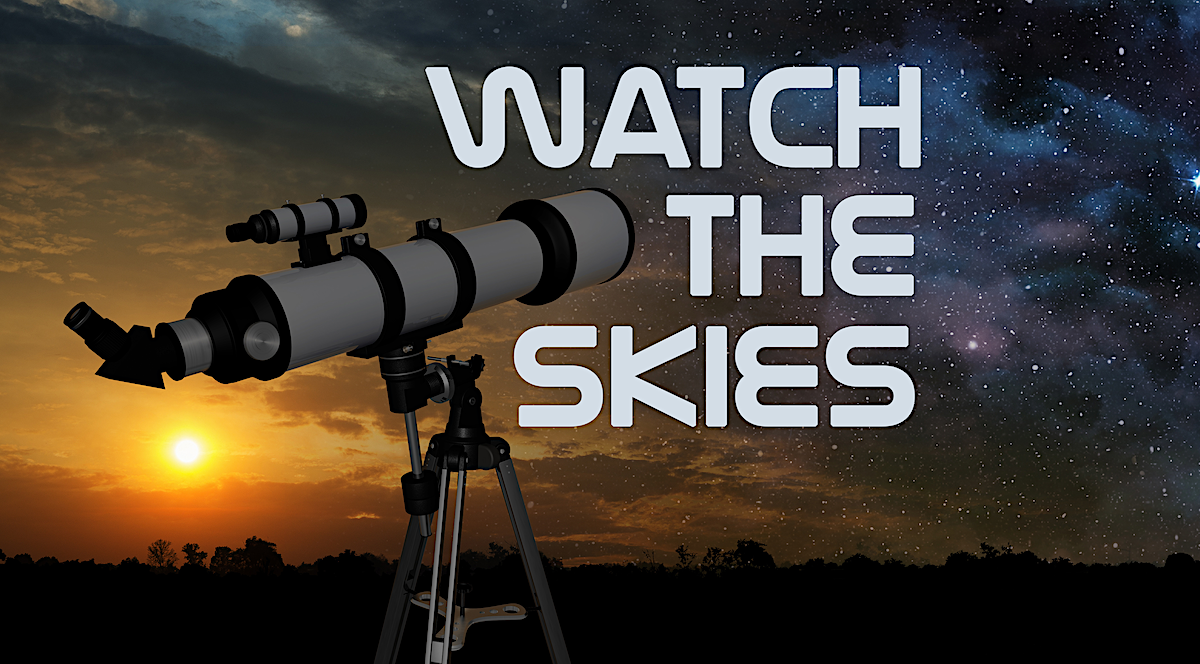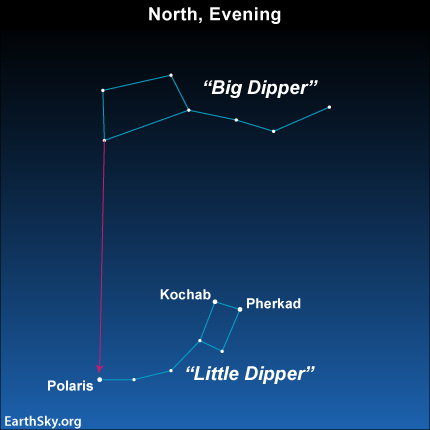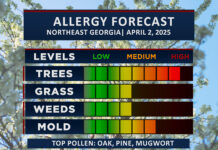
It looks like a pretty cloudy week across most of Northeast Georgia, but if any clear night skies do break out a near non-existent moon will lend to great dark-sky conditions.
Partial Solar Eclipse: The biggest story of the week is an annular solar eclipse that will be occurring across parts of North America. Here in Northeast Georgia there will be a partial solar eclipse, and much like the lunar eclipse of two weeks ago it will be minor and very difficult to see. In fact, parts of the area won’t be able to see any of it. The eclipse will be ongoing at sunrise Thursday and the sun will only be around 5-8% covered in the best areas near the far northeast corner of the state (Rabun County, namely). If you have a VERY good eastern horizon and a pair of solar glasses take a peak right as the sun comes up on Wednesday, but don’t expect the dazzling show we saw in August of 2017 and if you live south/west of roughly a Blairsville to Cleveland to Toccoa line don’t expect to see anything at all. The partial eclipse will last just a few minutes past sunrise.
The Planets this Week: Not much has changed with the planets since last week. Mercury continues to draw closer to the sun becoming harder and harder to make out in the bright evening twilight. Venus, however, continues it’s march up in the evening sky and appears very bright this week. Jupiter and Saturn remain high in the sky during the pre-dawn hours. The moon will be hanging out mostly in the twilight glare this week though it will join up with Venus on Friday morning to form a beautiful pair in the evening twilight.
Naked eye object of the week- Polaris: No single star has such a fabled history as Polaris, the North Star. It’s location high in the sky makes it a perfect star to try and view during the cloudy days when only occasional clearing occurs during the evening. It is most easily found as the brightest star in the constellation Ursa Minor, or as the last star in the handle of the Little Dipper. To find the Little Dipper just find the Big Dipper and follow a line drawn from the front two stars of the cup, as seen in the drawing below.
Polaris is actually a triple star system. Our eyes perceive Polaris Aa, which is a yellow super-giant over 5 times as massive as our sun, but two other smaller stars make up the trio. Polaris Aa is also a variable star, meaning that over time it’s brightness goes up and down. This isn’t particularly noticeable to our eyes due to the gradual change, but it does vary around .3 magnitude which if viewed side by side would be certainly visible. Polaris is the closest star to the North Celestial Pole, so it appears to stand motionless in the sky as all other stars in the northern hemisphere rotate around it. You’ve probably seen star trail images before, and the star all the circles trace around is Polaris! Polaris hasn’t, and won’t always, be the closest star to the pole, though. In fact, Christopher Columbus had to account for the circle Polaris made around the actual pole in his voyages in 1492. It will stick nearby to the pole for a long time to come, though, so it will continue to be the focal point of many photographers long exposures for centuries to come.
Telescope object of the week- M3: Also located high in the sky during the evening hours is a close group of stars known as a globular cluster. M3 is one such cluster. It is located some 33,000 light years away from Earth and was first discovered by Charles Messier himself on May 3, 1764. He mistook it for a nebula but just 20 years later astronomer William Herschel was able to resolve some individual stars. M3 is a globular cluster, which is a large cluster of stars strongly bound by gravity. This strong gravitational attraction gives them a spherical shape, and all of them are extremely old. Most of these clusters, including M3, are located on the outer edges of galaxies. Just how globular clusters form isn’t exactly known, but I do know they are beautiful to view in the night sky. The photo below comes courtesy of NASA and shows an extremely detailed view of M3.
For most of our telescopes at our homes, M3 will appear as a very fuzzy, bright blob in the otherwise pitch-black sky. Some individual brighter stars can easily be picked out but they only stand slightly above the fuzzy background that contains the other hundreds of thousands of stars. To find M3 look above and just to the right of Arcturus. The image below from NASA shows it’s location during the month of May and it maintains near this location into the first of June.
Hopefully the clouds will break allowing some time to view the sky this week before the moon becomes a problem once again.
Have a great week and watch the skies!










